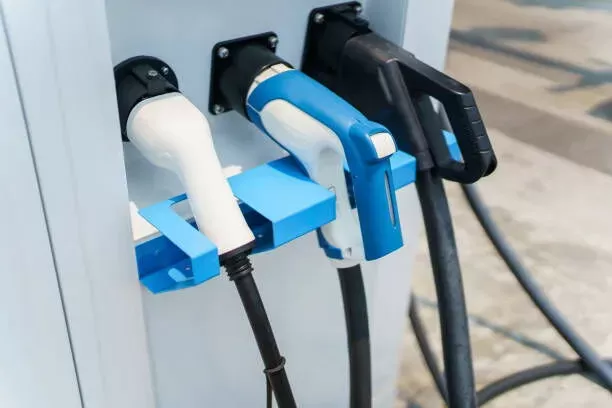Notifications

7 minutes, 35 seconds
-16 Views 0 Comments 0 Likes 0 Reviews

As a trusted EV charger manufacturer in China, Topper Company delivers dependable electric vehicle charging station equipment and comprehensive solutions.
As the electric vehicle (EV) revolution accelerates, charging infrastructure has become a top priority for consumers, manufacturers, and policymakers. Among the various charging options, Level 2 AC charging stations have emerged as a cornerstone of this transition, striking the perfect balance between speed, convenience, and affordability.
Found everywhere from homes and workplaces to parking garages and retail centers, Level 2 chargers are critical to supporting the everyday needs of EV drivers—and helping pave the way toward a cleaner, electrified future.
A Level 2 EV charger operates on a 240-volt power supply, the same voltage used by appliances like dryers or ovens. Unlike Level 1 chargers that plug into standard 120-volt outlets, Level 2 chargers deliver more power—and much faster charging.
Key features of Level 2 chargers include:
Voltage: 240V
Current Range: 16 to 80 amps (most home units operate at 32–40A)
Charging Speed: Adds 12 to 60 miles of range per hour, depending on the EV and setup
With this power, an EV with a 60 kWh battery can be fully charged in 4 to 8 hours—ideal for overnight charging or workday parking.
One of the biggest perks of owning an EV is the ability to charge at home. A Level 2 charger makes this process fast and efficient.
Access to a 240V outlet
Potential need for an electrical panel upgrade
Professional installation recommended for safety and code compliance
Modern Level 2 chargers come equipped with intelligent tools that make charging smarter and more cost-effective:
Wi-Fi and mobile app connectivity
Scheduled charging to take advantage of off-peak electricity rates
Dynamic load management to prevent overloads
Real-time energy tracking for insights into consumption and cost
These features turn your home charger into a personal energy management system.
Level 2 chargers in the U.S. typically range from 3 kW to 19.2 kW, while European models can go up to 22 kW. However, actual charging speed depends on two factors:
Charger Output Power
Your EV’s Onboard Charging Capacity
For example, if your car's onboard charger is limited to 11 kW, that’s the maximum speed—even if the station can deliver more.
Typical Range Gain:
10 to 75 miles (16–120 km) of driving range per hour
Up to 19x faster than Level 1 charging
Level 2 stations are widely available in public spaces, making it easy to top off your EV while shopping, working, or dining.
Common locations include:
Office buildings
Shopping malls
Hotels and resorts
Universities
Public parking lots
Hospitals
A few hours on a Level 2 charger can add 40 to 80 miles of range—often enough to cover multiple days of driving.
For businesses and municipalities, offering public EV charging:
Attracts eco-conscious customers
Increases foot traffic and dwell time
Supports sustainability and ESG goals
In commercial or multi-family residential settings, installing several chargers can strain the local electrical system.
That’s where load management technologies come in:
Dynamic load balancing distributes power evenly across chargers
Load shedding reduces output during peak demand
Energy management systems optimize usage to avoid overloading
These tools ensure safe, efficient, and scalable EV charging in any environment.
Level 2 EV chargers are designed for broad compatibility through standardized connectors:
North America: SAE J1772 plug (universal for all EVs, Tesla requires an adapter)
Europe: Type 2 (Mennekes) plug (Tesla supports natively in EU)
Networked public chargers often include features such as:
RFID card or app-based access
Session monitoring and usage reports
Integrated billing and payments
Remote diagnostics and maintenance alerts
This makes the charging process seamless, whether you’re at home or on the go.
Hardware: $400–$900
Installation: $500–$2,000 (depending on electrical upgrades)
Hardware: $1,500–$5,000+ per unit
Installation: $2,000–$10,000+ (depending on site complexity)
Tip: Many regions offer rebates, tax credits, or utility incentives to lower upfront costs. In the U.S., federal and state programs can significantly offset the investment.
Level 2 chargers support the widespread shift to electric vehicles by enabling reliable daily charging. Their impact includes:
Lower greenhouse gas emissions
Improved urban air quality
Reduced fossil fuel dependency
Pairing charging stations with renewable energy sources, such as solar panels, amplifies these benefits.
Higher customer retention for businesses
Positive brand perception
Long-term savings on fuel and maintenance
EV infrastructure also contributes to job creation in installation, maintenance, and energy services.
Level 2 EV chargers will continue playing a central role as EV adoption grows. Innovations on the horizon include:
Faster charging speeds with higher power levels
Bidirectional charging (V2G) to return energy to the grid
AI-powered load balancing
Integration with home solar and storage systems
Universal access/payment platforms for simplified use
Level 2 chargers are the practical workhorses of the EV world. Whether installed in homes, workplaces, or public spaces, they offer the flexibility, speed, and cost-effectiveness EV drivers need every day.
By bridging the gap between slow Level 1 and high-cost Level 3 DC chargers, Level 2 AC chargers make electric vehicle ownership easy and accessible—powering the movement toward a cleaner, smarter transportation future.Know more about Google SEO Directory
China EV Chargers EV Charger Manufacturer EV Charging Solutions

